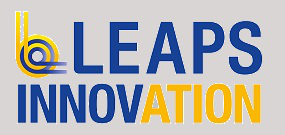Participants are invited to actively contribute to the programme of the event by submitting abstracts for a Poster in one of three topics:
|
Enabling peripheries; All things data; Multimodal & Multispectral research |
 |
DOWNLOAD the Abstract template on the main page (at bottom)
ABSTRACT SUBMISSION: via your Registration form.
a QUESTIONNAIRE can also be found on the main page - attach to your Registration or Email us
The submissions for Posters will be reviewed continuously by the Program Committee. A small number of submitters will be contacted directly (latest 20th of December) if they are selected for an oral presentation. These contributed presentations are 15 min, followed by 5 min for questions. Please be aware all abstracts will be included in a Book of Abstracts and made available to all meeting participants, they should contain openly shareable information.
ENABLING PERIPHERIES
- Abstracts addressing this section should focus on topics showcasing the added value of a combined approach via eg. user sample preparation help for microscopy methods; auxiliary methods (eg. AFM, TEM, optical microscopies, etc.), offered in combination with synchrotron microscopy; other joint initiatives between beamlines/synchrotrons or beamlines and off-site facilities. We welcome other suggestions not listed here that might be considered relevant in this topic.
ALL THINGS DATA
- Abstracts addressing this section should focus on topics like harmonizing data formats across techniques; data analysis software suites for multiple techniques; help with (multimodal) data visualization; measurement & data processing pipeline & automatization, visualization, etc.
MULTIMODAL and/or MULTISPECTRAL MICROSCOPY RESEARCH
- Abstracts addressing this section should focus on showcasing successful combinations of multiple microscopy techniques in addressing a scientific research question. Attention should also be paid to the different factors that helped/hindered the success and the choice of microscopies/other methods needed to address the science.


